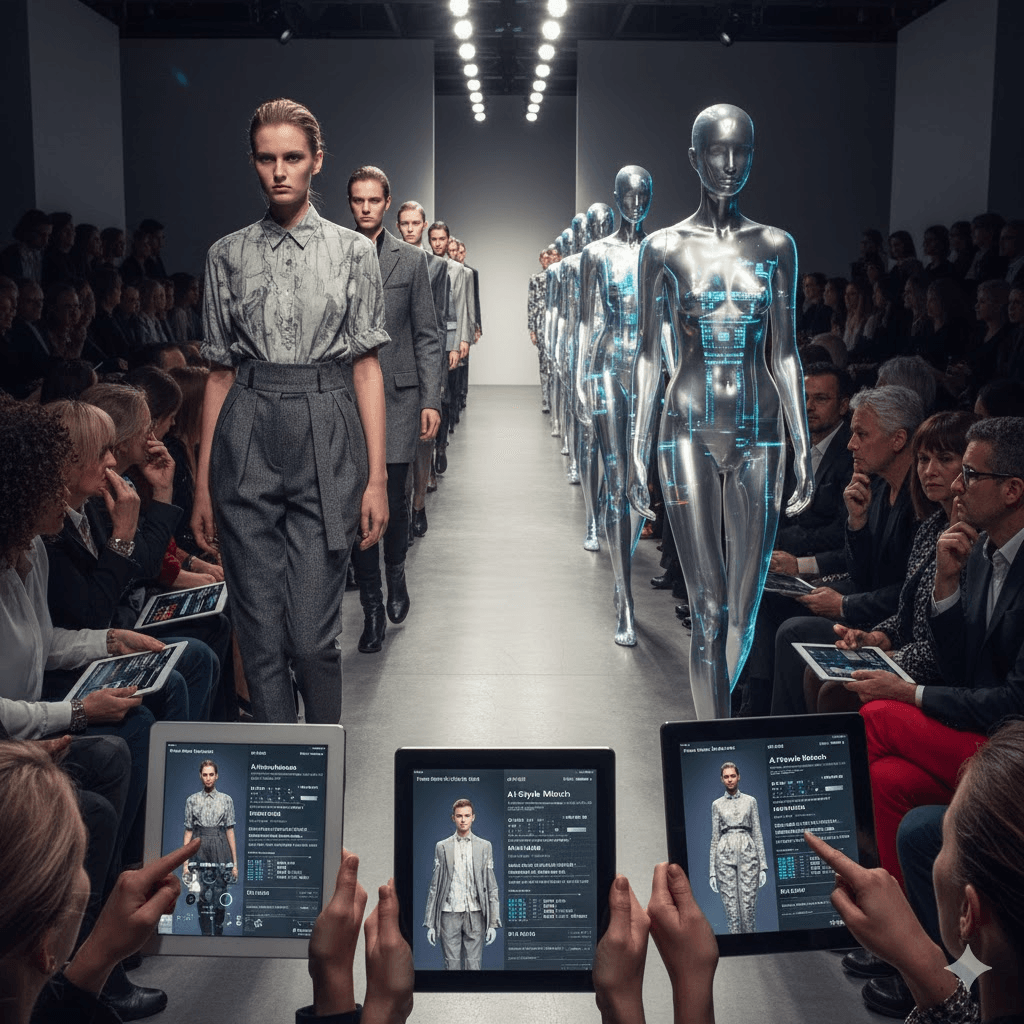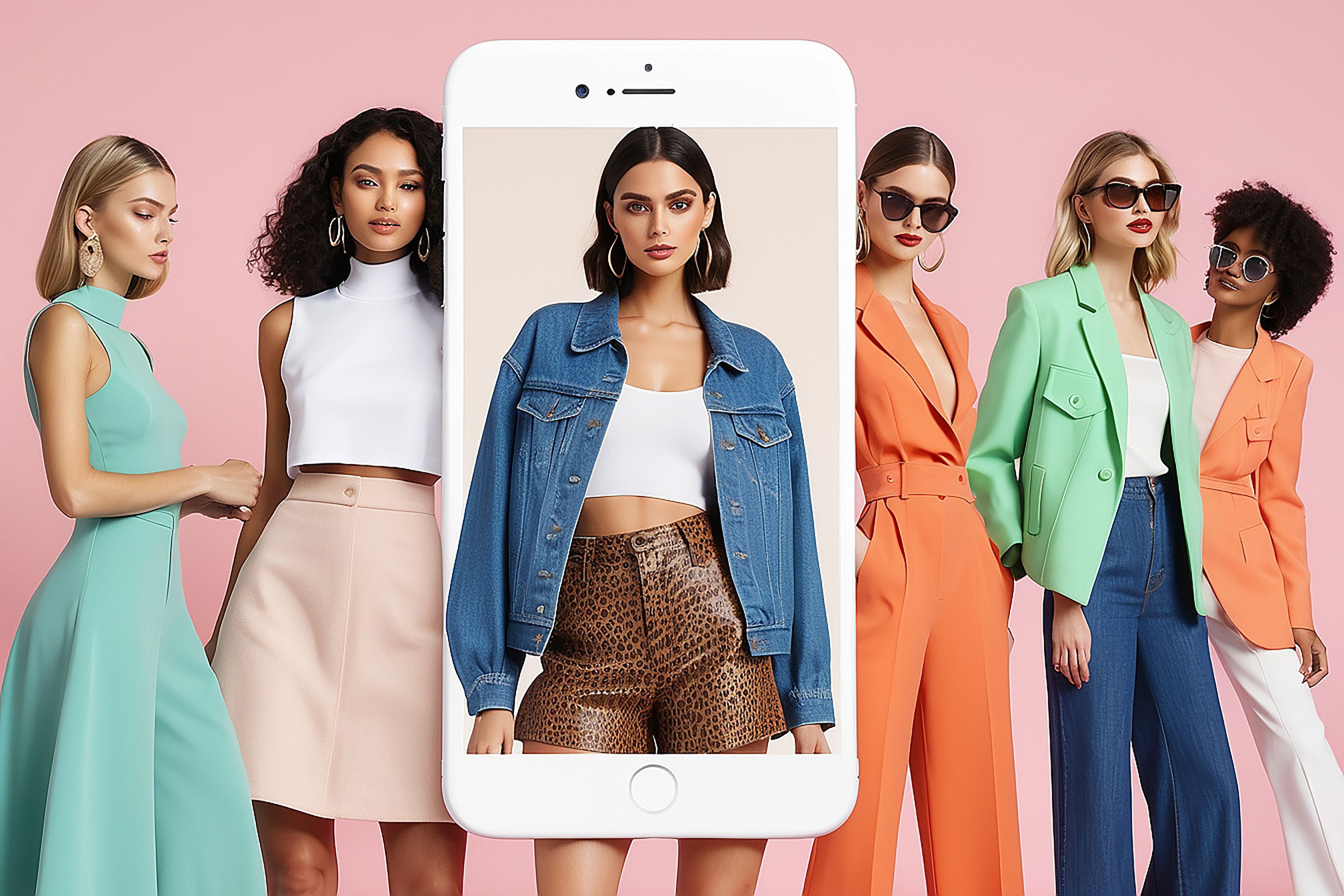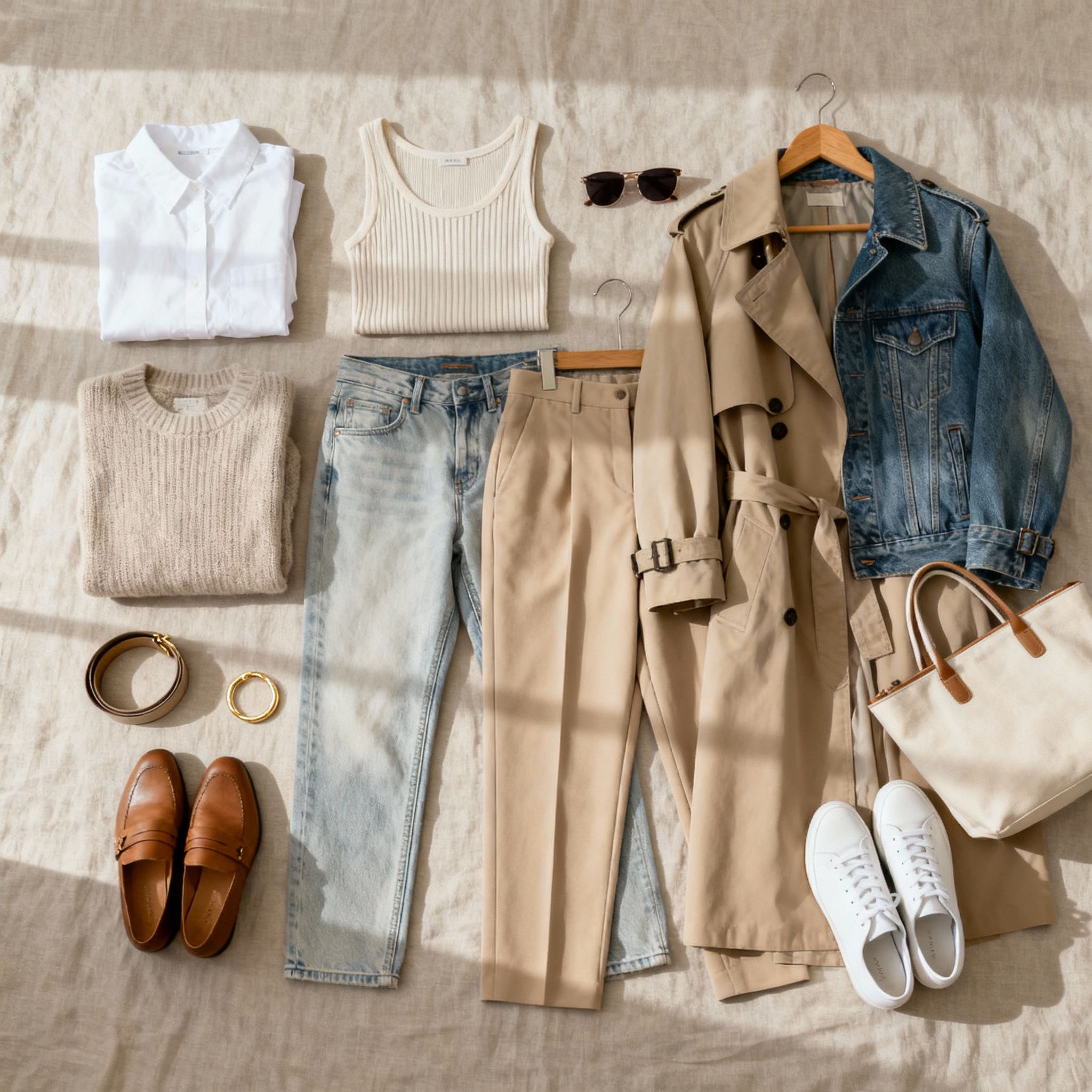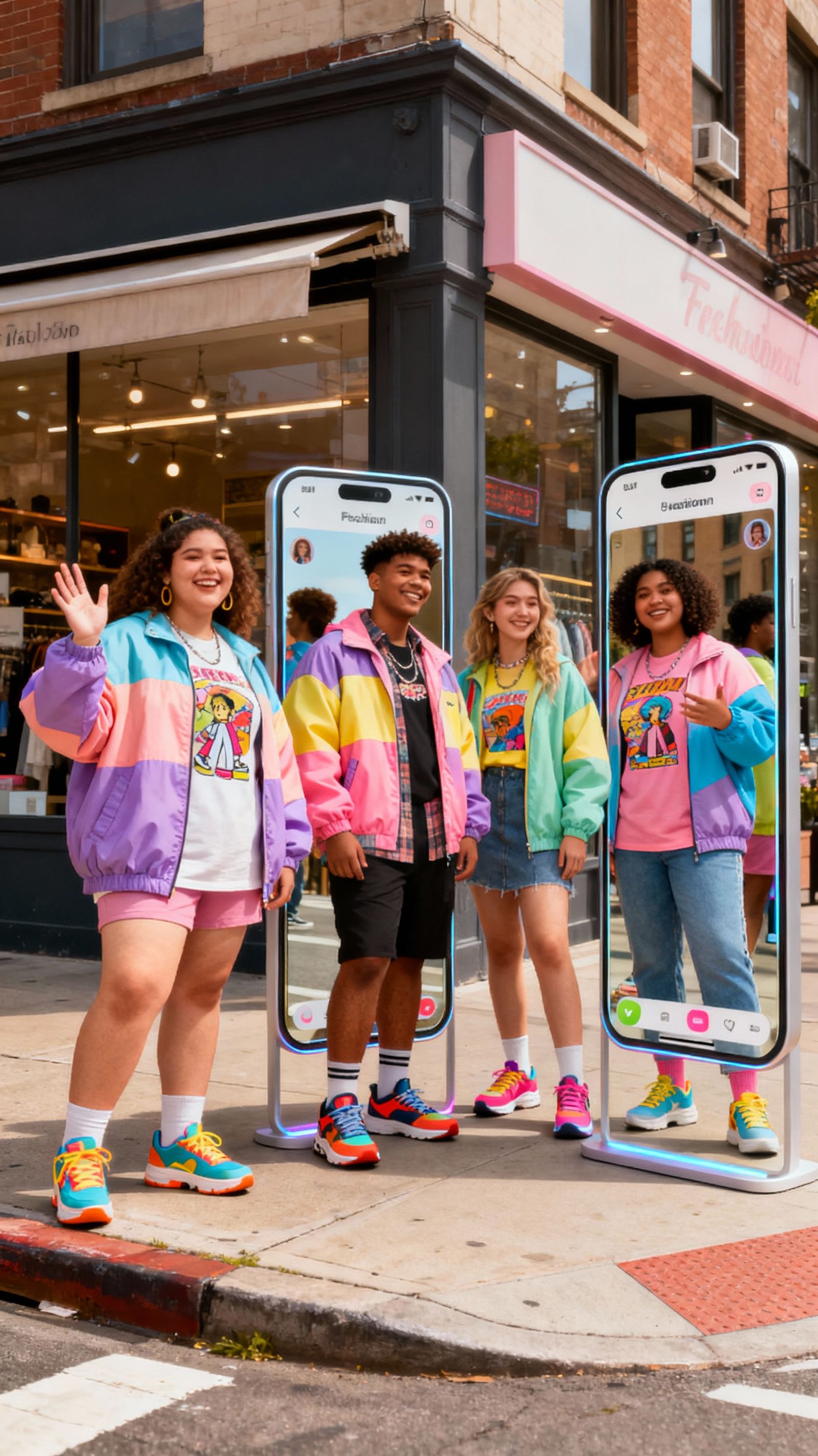Outfits Meet Emotion With Mood-Based AI Styling
AI Fashion Personalization: Is It Real Progress or Just Algorithmic Illusion


TL;DR
AI fashion personalization is neither magic nor meaningless. It delivers measurable results like higher conversions, lower returns and better shopping experiences but still relies entirely on user data not emotional or creative intuition. It raises concerns around privacy bias manipulation style bubbles and transparency. Its value depends on responsible design, inclusive data and user control. When used ethically it can enhance creativity, sustainability and personal expression rather than replace it.
AI fashion personalization has become one of those cultural tech debates where people either swear it changed their shopping life or insist it is marketing smoke dressed in sequins. The truth, like most things involving humans, data, and clothing, sits somewhere between measurable progress and justified skepticism. So let’s unpack whether AI fashion personalization is genuinely transforming how we shop or just an algorithm performing a flashy runway walk for investors and headlines.
The Debate on AI Fashion Personalization

Personalization is not theoretical anymore. It affects revenue.
Fashion brands do not keep pouring money into a fashion intelligence engine that does not work. Over the past few years, AI driven recommendations have increased conversions, reduced browsing abandonment, and helped cut costly return rates. Some retailers have publicly reported sales lifts nearing 50 percent on AI personalized collections. Fit analytics and digital body scanning tools have similarly lowered sizing related returns, which significantly improves profitability. These are not abstract claims. They show that AI fashion personalization delivers measurable business outcomes. If it were just hype, budgets would have dried up already.
But intelligence is statistical, not emotional.
Many shoppers assume AI understands their personality or aesthetic essence. It does not. AI fashion personalization works by recognizing patterns in data signals such as clicks, purchases, time spent on product pages, saved outfits, seasonal buying, and sometimes body measurements. The fashion intelligence engine compares those signals to thousands or millions of other users to predict what you might like next. That means the system approximates taste rather than comprehends it. You and your best friend could wear similar jeans for totally different emotional reasons. The AI does not know that. It only sees behavior, not backstory.
User experience has clearly improved.

Ask a frequent online shopper and you will often hear the same thing. AI makes digital shopping feel less overwhelming. Instead of endless scrolling, personalized feeds surface clothes that fit your style, budget, and size. Styling suggestions and curated outfits reduce decision fatigue, especially for users who want guidance without hiring a stylist. Some fashion intelligence engines combine recommendations with size prediction, weather consideration, or wardrobe mapping, which makes the experience feel like a practical assistant rather than a product grid. Users frequently describe it as having a stylist available anytime they want to explore new looks.
The filter bubble problem is real.
There is a downside to algorithmic convenience. Personalization works by reinforcing what the system already believes you like. If you once clicked three black sweaters, the platform may keep serving monochrome basics forever, trapping you inside a narrow fashion loop. Over time, this limits experimentation with new silhouettes, emerging designers, or cultural aesthetics. Researchers studying recommender systems call this the algorithmic taste cage. Without intentional diversity controls, personalization becomes predictable, safe, and creatively stagnant.
AI does not always optimize for the shopper.
Retailers typically train personalization engines to increase average order value, repeat purchases, or cart completion. That means the system sometimes prioritizes persuasive nudges rather than what will genuinely serve your wardrobe. Urgency triggers, scarcity messages, and social proof cues are baked into many recommendation flows. When personalization becomes behavioral persuasion rather than thoughtful guidance, users start feeling managed rather than supported. The ethical question is simple. Does AI help you build a wardrobe you love, or does it just encourage more buying?
Inclusive personalization is still inconsistent.
If the data used to train personalization models underrepresents certain sizes, skin tones, genders, or body shapes, the recommendations will not be fully inclusive. This has been documented in multiple research studies where shoppers outside historically prioritized size ranges receive fewer or less relevant suggestions. For those consumers, AI fashion personalization may feel like a refined user interface wrapped around the same old exclusion patterns. Progress is being made, but fairness cannot be assumed.
Personal data fuels the experience, and that raises questions.
Accurate personalization requires detailed information. Not just what you bought, but what you considered, returned, admired, ignored, or shared. Some systems request body measurements, lifestyle context, or social media behavior. Shoppers deserve clarity on what is collected, how long it is stored, who can access it, and whether it could be used to infer things like income, relationships, or health status. Trust depends on transparency, not just convenience.
AI can enhance creativity but may also flatten originality.
Generative AI tools can help designers explore silhouettes, colorways, and prints faster than manual sketching. That sparks creative momentum and shortens development cycles. However, when brands rely too heavily on template driven outputs, collections risk becoming algorithmically predictable. Fashion thrives on cultural storytelling, rebellion, experimentation, and artistic discomfort. Personalization cannot replace that. At best, it can support it.
Sustainability may be personalization’s strongest argument.
Fashion waste persists because brands guess what customers want, produce large quantities, and hope demand matches supply. The fashion intelligence engine offers an alternative. When demand forecasting is made to measure manufacturing alignment with individual preference data, brands can produce fewer unwanted items and avoid mountains of returns. This shift could reduce environmental impact more meaningfully than marketing campaigns ever have.
The deciding factor: transparency and user control.
When users understand why an item was recommended and have the ability to adjust inputs such as mood, occasion, fit preferences, or ethics filters, AI fashion personalization feels collaborative. When recommendations appear mysterious and uneditable, suspicion grows. The future of personalization depends less on smarter models and more on respectful human centered design.
A platform like Glance is working toward that direction by offering recommendations tailored to personal style, size needs, and real world shopping contexts rather than generalized trend chasing. But even then, the system only works if the shopper feels informed and empowered, not analyzed.
Conclusion
It is real in the sense that it improves shopping efficiency, increases accuracy, boosts sales, and reduces friction. It is limited because it cannot understand emotion, intention, or identity beyond available data. It is risky when deployed without inclusivity, transparency, or user agency. And it becomes drama when brands oversell it as magic instead of acknowledging the math.
Fashion has always been personal. AI simply joined the conversation. In the next few years, the question will not be whether personalization works. It will be whether it works in a way that respects creativity, individuality, and choice.
FAQs Related to AI Fashion Personalization
1. What is AI fashion personalization
It uses machine learning to recommend clothing sizes, styles and outfits based on individual shopper data and behavior patterns.
2. Is AI fashion personalization actually accurate
Yes to an extent. It predicts preferences from clicks, purchases body metrics and browsing but it does not understand human identity or emotions.
3. Does AI fashion personalization invade privacy
It depends on data policies. Accuracy requires personal data so transparency consent and security are essential for user trust.
4. Can AI personalization reinforce fashion bias
Yes. If training data lacks inclusivity certain sizes cultures or aesthetics may receive poorer or limited recommendations.
5. Will AI replace human stylists and designers
No. It enhances efficiency and ideation but human taste cultural awareness and emotional nuance remain irreplaceable.






